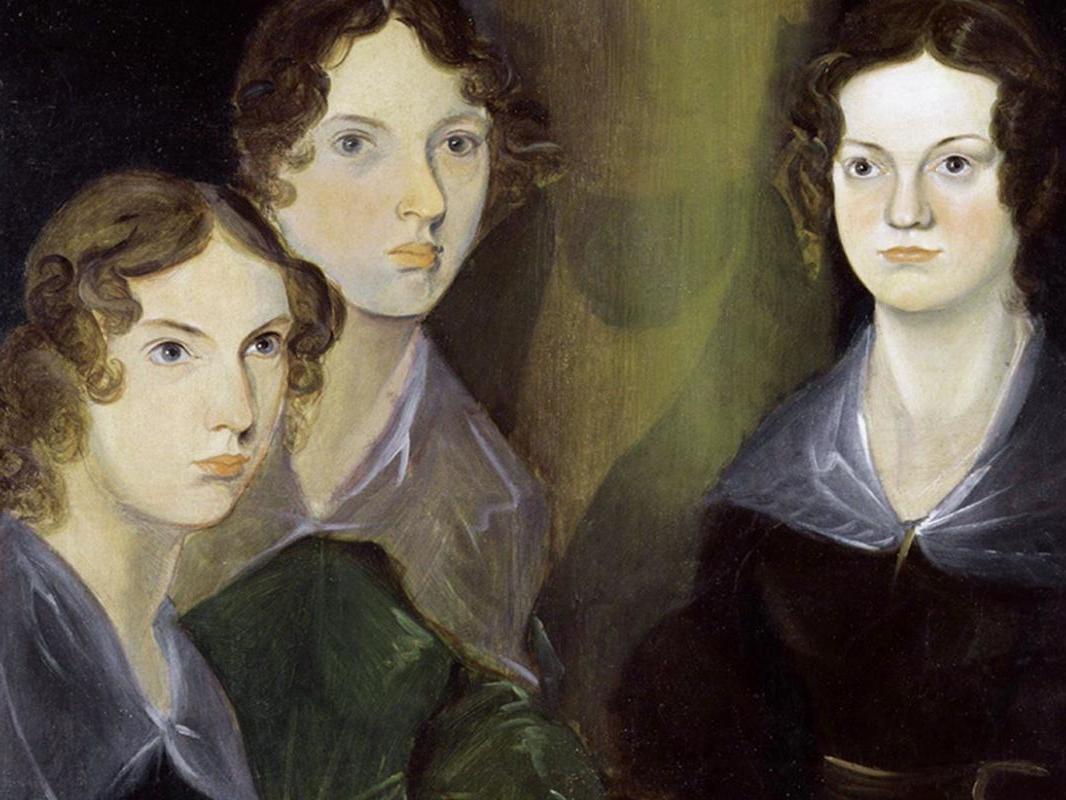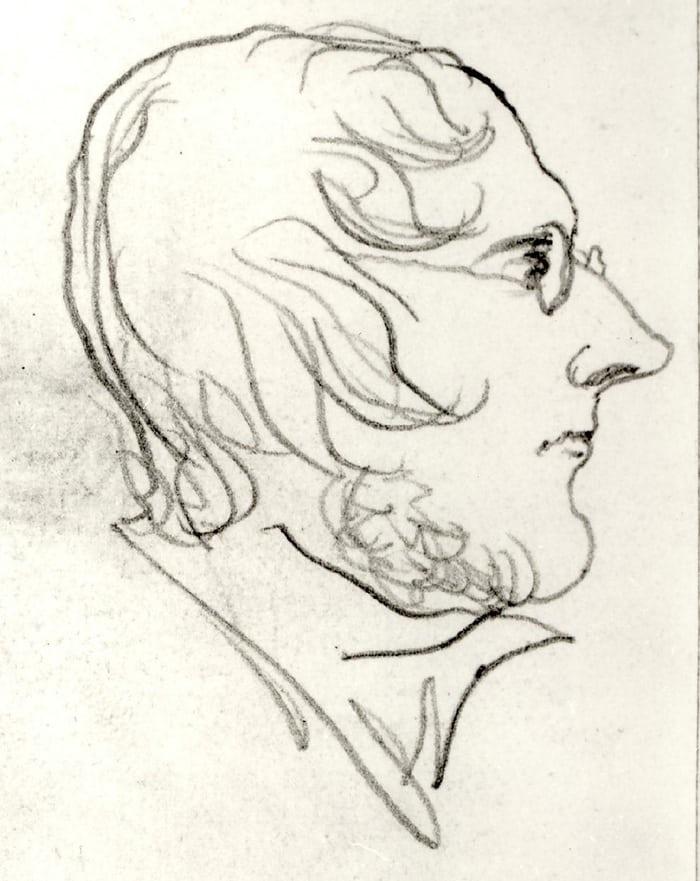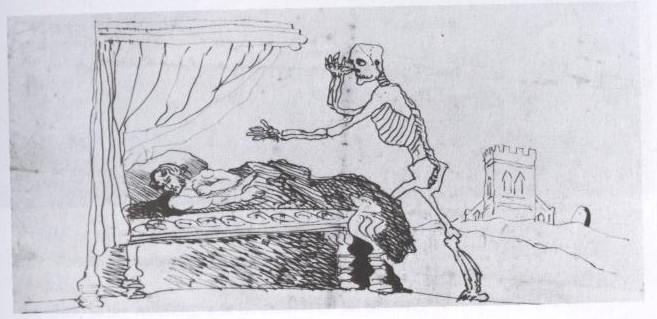Branwell Bronte: The mad, bad and dangerous brother of Charlotte, Emily and Anne
He failed to become as successful as his sisters and suffered bouts of addiction to alcohol and opiates, But Branwell was always been in the shadow of his more famous siblings. But this is the year he comes out into the light

Your support helps us to tell the story
From reproductive rights to climate change to Big Tech, The Independent is on the ground when the story is developing. Whether it's investigating the financials of Elon Musk's pro-Trump PAC or producing our latest documentary, 'The A Word', which shines a light on the American women fighting for reproductive rights, we know how important it is to parse out the facts from the messaging.
At such a critical moment in US history, we need reporters on the ground. Your donation allows us to keep sending journalists to speak to both sides of the story.
The Independent is trusted by Americans across the entire political spectrum. And unlike many other quality news outlets, we choose not to lock Americans out of our reporting and analysis with paywalls. We believe quality journalism should be available to everyone, paid for by those who can afford it.
Your support makes all the difference.The most famous painting of the Brontë sisters – in fact, the only group portrait in existence – hangs in the National Portrait Gallery in London, depicting diminutive Anne, Emily and eldest sister Charlotte arranged around a small table holding a book, the first two sisters separated from the third by a pillar.
The painting was first mentioned in 1853, by the novelist and short story writer Elizabeth Gaskell, who published a biography of Charlotte Brontë in 1857, and is thought to have been painted around 1834, when the sisters were all in their teens.
The artist was none other than the lone male sibling, Branwell, and over the almost two centuries since it was painted at the family home in Haworth, West Yorkshire, a pale ghost has gradually appeared beneath the pillar that separates the sisters.
It is Branwell himself, as tests proved in 2015, originally the fourth figure in the portrait, but then painted out and replaced by the pillar by himself. It is a fitting metaphor for the life of the brother who is often described as the black sheep of the Brontë family, and who has forever been in the shadows of his more famous and successful sisters.
However, this is the year of Branwell, when the bicentenary of his birth is marked with a year-long series of events and exhibitions at Haworth’s Parsonage, the old home of the family and now a museum where visitors can step back in time and see exactly how the Brontës lived.

The sisters, of course, are known the world over for their collective body of work including Wuthering Heights, Jane Eyre, The Tenant of Wildfell Hall. Very little is widely known about Branwell, other than he had ambitions to be a successful artist which were never realised, and died aged 31 after spiralling into addiction to alcohol, laudanum and opium. There are even conspiracy theories which abound which claim Branwell actually wrote his sisters’ books for them.
But while it’s tempting to view Branwell as a Byronesque, proto-Beat Poet figure who suffered for his art through drink and drugs, the reality is he led a rather tragic life littered with failures, fraught ambitions, and unfulfilled dreams.
We’re in the middle of some major anniversary celebrations in Brontëland. Charlotte was born in 1816, Branwell 1817, Emily in 1818 and Anne in 1820. With no bicentenary birth to commemorate in 2019, that will instead be given over at the Parsonage to marking Patrick Brontë, father of the siblings, and his coming to Haworth where he served as curate and outlived all his children by a long way.
But this is Branwell’s year, and curating a series of events and exhibitions at the Parsonage is the poet, playwright and novelist Simon Armitage. On 7 October, at the museum, Armitage will be in conversation about Branwell’s life with the actor Adam Nagaitis, who portrayed the Brontë brother in last year’s Sally Wainwright BBC drama about the family, To Walk Invisible.
“To a certain extent, I’ve always been aware of Branwell,” says Armitage, who was born in Huddersfield and now lives in Holmfirth. “But I suppose he was always a background figure in the Brontë story. He did literally paint himself out of his own portrait of the family.”
The Parsonage asked Armitage, who says growing up in West Yorkshire meant the Brontë story was “always part of the landscape for me”, to curate this year’s Branwell events. “It’s not really a celebration,” he says carefully. “I think that’s the wrong word when talking about Branwell. But it is a marking of the 200th anniversary of his birth. I think what I’m hoping is that this year will raise Branwell’s profile a bit. I suppose it’s something of a re-branding exercise.”
Branwell was actually the fourth of the Brontë children to be born. The two eldest siblings, Maria and Elizabeth, died as young children in 1825. The family’s mother, Maria Branwell, had died in 1821 and her sister Elizabeth had moved in to the Parsonage to help Patrick with the four surviving children, who had become a close-knit group.
Largely educated at the Parsonage by Elizabeth and visiting tutors, Branwell was a precocious child with a not inconsiderable intellect. He was red haired and quick-witted, and had a fiery disposition. He had ambitions to both be an artist and a writer, and his gregarious personality and creative impulses had an effect on his sisters, of that Armitage is in no doubt.
“I think he must have been a huge influence on his sisters in their creative writing and creative thinking. He was exciting and interesting, and we can only speculate about the extent to which his escapades fuelled their creativity,” he says.
Others have speculated more closely about Branwell’s involvement in the sisters’ work; indeed there has long been a “Branwellian” movement, since the 1920s at least, which firmly believes he actually wrote Wuthering Heights, if not more of the Brontë books.
It’s a theory that’s roundly dismissed as nonsense these days, and which was satirised in Stella Gibbons’ 1932 novel Cold Comfort Farm, in which the character Mr Mybug is writing a book devoted to the conspiracy theory. Mr Mybug opines, “You see, it’s obvious that it’s his book and not Emily’s. No woman could have written that. It’s male stuff…”
The main argument (apart from, of course, that the whole idea is the sort of sexist claptrap roundly taken down in Joanna Russ’s 1983 book, How To Suppress Women’s Writing) against the whole idea is that while Branwell had very lofty ideas and was certainly not backwards at putting himself forwards, he probably didn’t have the talent and drive to do it.
Branwell had announced early on that he was going to be a poet and a painter. According to Armitage, he couldn’t have set the bar any higher. “He chose poetry and oil painting which were probably the most difficult disciplines to progress in at that time,” he says.
At the age of 21, Branwell set up in an artist’s studio in nearby Bradford, and while he made a lot of friends in the artistic community, he spent more time in the pubs than at his easel, and consequently didn’t make much money. He then took on a series of jobs that he managed to completely fail at, from private tutor to a family, at which he lasted a year, to clerk on the railways, from where he was sacked after being unable to explain discrepancies in the books.
Most spectacularly – and scandalously – Branwell was roundly dismissed from a job as tutor at a large house at Thorp Green, near York, a job sister Emily had secured for him after she had served there as governess for three years. The reason for his dismissal? Apparently he had embarked on an affair with the lady of the house.
It’s that and the fact that for the remaining three years of his life, back at home, unable to either fulfil his dreams at writing and painting or hold down a steady job, that contributed to Branwell’s reputation as the bad boy of the Brontës.
“Really, his talents didn’t take him much beyond his teenage years,” says Armitage. “The lack of progress with his painting must have really frustrated him. His talent had dried up at the point when for most people they were beginning to enjoy artistic accomplishment.
“There’s certainly a picaresque element to his life, which some people seem to find quite exciting. But it’s more poignant and sad, really. If Branwell was being judged by today’s standards then we would certainly say he suffered from mental health problems and addiction issues.”
As part of this year’s Branwell commemorations at the Parsonage, they have recreated his studio, and while it is comprised of non-original items (unlike the other rooms in the museum which feature the exact clothing, furniture and decorations that the Brontës wore and used) it has been painstakingly researched and sourced and is everything you would want the den of the wayward Brontë brother to be. Unmade bed, filthy sheets, books scattered across the floor.

But while Branwell never made it as an artist or writer (he submitted several pieces to magazines of the time and had them all returned), and never managed to cling on to a job for long, we perhaps shouldn’t feel too sorry for him.
“He was usually the author of his own downfall,” says Armitage. “His jobs always ended in disaster. I’m sure his heart wasn’t in any of them, they were never what he aspired to, but he could never make a success of what he wanted to be. He never produced anything of a high enough quality. He felt a failure.”
What might have made things worse for Branwell was that, as Armitage puts it, “as he was nosediving, his sisters’ stars were rising”.
Indeed they were. Although forced to publish under male, or at least very gender-neutral names, because writing novels just wasn’t what young ladies did in the mid 19th century, Anne, Emily and Charlotte were on the path to success, and literary immortality. Jane Eyre and Wuthering Heights were both published in 1847, The Tenant of Wildfell Hall in 1848.
Unfortunately, it’s likely that Branwell, by this point in a mire of alcoholism and addiction to opiates, was probably so far gone that he didn’t even know about his sisters’ success. He became ill, probably from tuberculosis exacerbated by the punishment he was putting his body through, in the summer of 1848 and died on 24 September.
Most people who beat a path up the cobbled street of Haworth to the Parsonage go in search of the sisters, Charlotte, Anne and Emily. But this year at least they’ll be leaving with more of a sense of who Branwell, the wayward son, actually was.
If he left no other legacy, at least he created the only surviving portrait of our greatest literary dynasty, and though in a fit of pique and frustration he painted himself out of it, he’ll always be there, in the background, the black sheep of the Brontës.
We Need To Talk About Branwell, with Simon Armitage and Adam Nagaitis, is at 2.30pm on 7 October. For tickets and for more information about the Parsonage exhibitions and events, go to Brontë.org.uk
Join our commenting forum
Join thought-provoking conversations, follow other Independent readers and see their replies
Comments